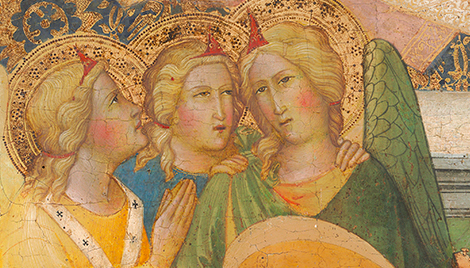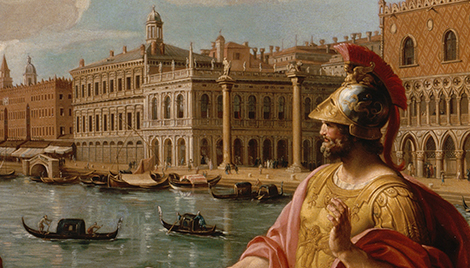Collection Highlight: Elisabetta Sirani
Elisabetta Sirani, The Archangel Gabriel, possibly 1662, oil on canvas, Samuel H. Kress Foundation.
On November 5, 2021 the National Gallery of Art’s Center for Advanced Study in the Visual Arts released a video lecture on Bolognese women painters entitled “More perfect and excellent than men”: The Women Artists of Bologna. The lecture was hosted by Professor Babette Bohn (Texas Christian University), scholar of Bolognese female artists and author of Women Artists, Their Patrons, and Their Public in Early Modern Bologna [Penn. State U.P., 2021].
Professor Bohn’s lecture discusses 68 women artists who worked in Bologna and beyond during Early Modern Italy, such as painter Lavinia Fontana (1552-1614), printmaker Veronica Fontana (1651-1690), and sculptor Clarice Vasini (1735-1823).
Bohn challenges commonly held notions about why women artists were less celebrated than their male counterparts during the Italian Renaissance, mainly the theory that women artists were limited by their access to education and restrictions on which subjects they could portray. Bohn suggests that these exaggerations, as well as the tendency to extoll women artists’ excellence by juxtaposing their skill with their lack of resources, helped craft an actual culture of women’s accomplishment in Bologna, a city known for its progressive attitudes towards women.
One artist highlighted throughout Bohn’s lecture is Elisabetta Sirani (1638-1665) – an artist whose work can be found in the Samuel H. Kress Collection. Sirani was well-known for her ability to paint canvases quickly and artfully. She began producing works and managing her family’s workshop at the age of nineteen, supporting her parents and siblings through her art. She spent her life in Bologna and became successful in the male-dominated profession, gaining commissions from wealthy nobility and even the Grand Duke Cosimo III de Medici.
Sirani was prolific during her decade-long career, producing over 200 paintings, drawings, and etchings, as well as teaching in her female art school. A savvy businesswoman, she employed many strategies to market herself as an expert painter. She often invited patrons to watch her while she worked and gifted pieces to new clients in order to cultivate future commissions. She also created a unique identity and assumed authorship of her works by signing them; distinctive because it was a practice that male painters rarely employed.
Elisabetta Sirani, Head of Christ,1655-65, oil on canvas, Museo de Arte de Ponce.
Samuel H. Kress collected his first work by Sirani in 1941, The Archangel Gabriel (possibly 1662), which now resides with the Foundation. A second work, Head of Christ (1655-65), was purchased by the Samuel H. Kress Foundation in 1950 and given to the Museo de Arte de Ponce in Puerto Rico in 1962, where it can still be found. Both works are excellent examples of Sirani’s expressive and dynamic style – warm gazes and tender moments, intense coloring, rich shadows, and fluid impasto. Surrounded by fellow Italian Renaissance masters, Sirani’s works are in good company in the Kress Collection.



